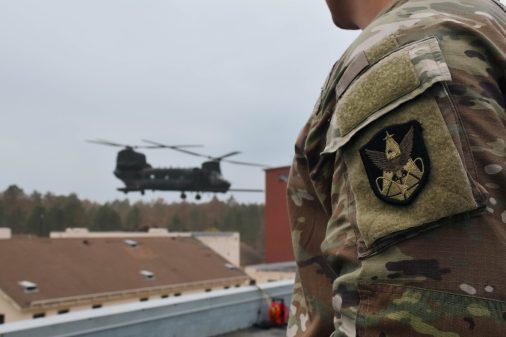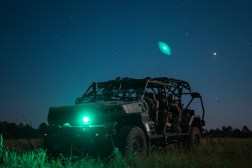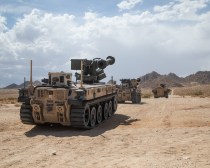General Dynamics pitching new tech to bolster the Army’s resilience against GPS jamming and spoofing

While the Army has a program designed to address how vehicles will operate in GPS-denied environments, one big prime contractor believes this program only covers a slice of the force and is now proposing a family of systems that it says would close that gap for position, navigation and timing (PNT) capabilities.
The Mounted Assured Position, Navigation and Timing System (MAPS) program provides vehicles with the capability to operate in environments where access to GPS is jammed, spoofed, or otherwise denied. The first iteration, known as GEN I, was a quick reaction capability provided to U.S. forces for anti-jam antenna to ensure GPS accessibility. GEN II provides increased protection with sensor fusion algorithms and non-radio frequency sensors and was awarded to Collins Aerospace.
However, the MAPS program only covers a slice of the totality of Army vehicles.
“We’re aware that the vast majority of warfighters will not be covered by this program of record,” Aaron Mebust, director of GPS Source at General Dynamics Mission Systems, said in an interview.
General Dynamics was the main contractor for MAPS GEN I, which is how the company determined a capabiltiy gap existed.
“We have learned a lot through fielding to those brigade combat teams that were supported through the MAPS GEN I effort,” he said. “We’ve applied a lot of those lessons learned into our tiered product approach and what we have is a low cost, easily installed … family of products that we believe will very elegantly address the threats and the vulnerabilities.”
The tiered system General Dynamics has developed, which is designed to operate alongside the MAPS program, provides capabilities based on how intense the denied environments could be. The most extreme, dubbed Condition 3, involves a highly denied environment. In Condition 2, forces can expect some level of jamming, while Condition 1 involves novel jamming and interruption of GPS.
This threat picture is based upon Army threat data and it would be up to the Army to decide which units or vehicles will get what tier, Mebust said. However, he noted that a general rule of thumb is Condition 1 would be combat service and support vehicles — such as depot level maintenance and larger logistical elements; Condition 2 would be combat support — such as ammunition haulers, fuel haulers and ambulances; and Condition 3 would be ground combat systems.
“Even though 20,000 ground combat systems are going to get MAPS GEN I and MAPS GEN II, there are still a large number of those vehicles that will not get a MAPS solution as part of the program of record. This would be a very good fit for those platforms that are going to be exposed to that very high-energy environment in which GPS will likely be denied,” Mebust said. “We’ve created these systems to make it very easy for the Army to understand that these systems are, number one, available today, number two, are cost effective and number three, very easily defined what the performance criteria of these systems are so they can align the performance of the systems with the mission requirements of those platforms.”
No requirement currently exists for what General Dynamics is proposing, meaning the Army is not funding such an effort or putting it out for contractors to bid — so General Dynamics had to develop the technology on their own dime.
“We know, based off our experience with MAPS GEN I and looking at the MAPS GEN II program of record, we know the Army needs something like this,” Mebust said, noting that this is similar to how the GEN I program came into being.
General Dynamics recognized a need, invested its own money and eventually was funded to provide MAPS GEN I to the force.
“There is general consensus across the board that something needs to be done, that the program of record is insufficient for the entire force. Now, have requirements been written? No. Has money been POMed? No,” Mebust said, referencing the program objective memorandum that budgets out for five years. “But there is the general agreement that something needs to be done and we’re helping spur those discussions as to what does that look like, what are the performance requirements, what are the price points, what are the volumes that we’re talking about.”
General Dynamics has taken its systems out to a variety of government test events to demonstrate its capability and utility in the hopes the Army will soon develop a requirement to get it into the hands of soldiers.
“We have attended these government test sessions. They use threat-relevant emitters to put us in a contested and a challenged environment, and we produce an output with our systems and we share the results with those organizations in the Army so they can see what industry is capable of doing,” Mebust said. “We’ve been informing the Army helping to get to realize that yes, there are options, there are solutions out there, they are readily available, they are worthwhile, it is something that absolutely will increase the resilience of the force when it comes to threats to PNT.”






